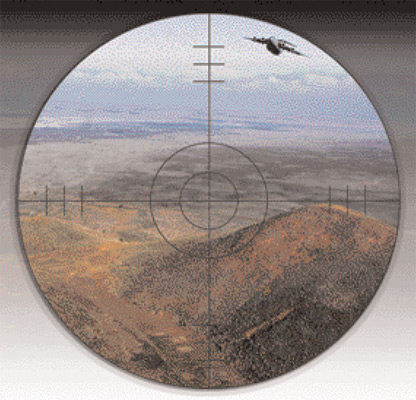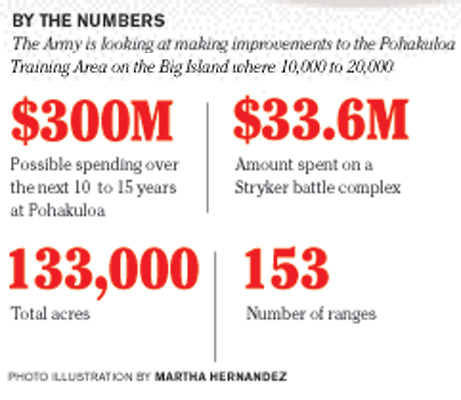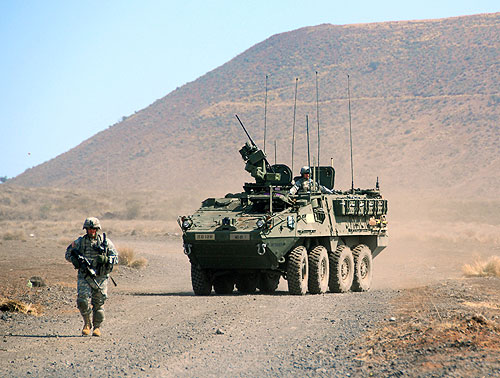Upgrade in sight



Schofield Barracks soldiers of the 2nd Stryker Brigade Combat Team’s 1st Battalion, 21st Infantry spent two weeks at the Big Island’s Pohakuloa Training Area preparing for a deployment to Iraq. Army soldiers, Hawaii-based and transiting Marines, and the Hawaii National Guard are among the ground forces that regularly train there.



The Army wants to modernize its vast Pohakuloa Training Area on the Big Island for the 10,000 to 20,000 U.S. troops who use it each year, and increase high-altitude helicopter training on Mauna Kea and Mauna Loa to meet a shift in emphasis to Afghanistan.
An Infantry Platoon Battle Area at 133,000-acre Pohakuloa that also could be used for companies of about 150 soldiers — and replace past live-fire training at Makua Valley — is a priority for the Army, with the service hoping it can begin construction in 2013.

Other plans being examined in an environmental impact statement include updating targets and digitizing firing ranges for better evaluation, improving roads and utilities, and demolishing 1950s-era Quonset huts and replacing them with modern structures.
The Army said many of the training ranges at Pohakuloa do not meet current training requirements and do not provide enough capacity.
"PTA looks like a ‘M*A*S*H’ set. You could film a Korean War movie over there and not have to change a doggone thing," said Chuck Cardinal, director of training for U.S. Army Pacific headquartered at Fort Shafter.
Don't miss out on what's happening!
Stay in touch with breaking news, as it happens, conveniently in your email inbox. It's FREE!
In 2006 the Army bought 23,000 acres from Parker Ranch for military maneuver training for $31.5 million, and it has spent $33.6 million for a Stryker armored vehicle "battle area complex" expected to open in 2012 at a separate spot at Pohakuloa. But that facility is mainly for Stryker gunnery, officials said.
"We need a digitized modern range to support (infantry) maneuver live fire," Cardinal said. He added that there is company-level live fire capability now at Pohakuloa, "but it’s like sticking a bunch of old targets out on the range and calling that company-level live fire. It’s not a sophisticated modern range."
The Army was unable to provide a cost estimate for the plan, but officials previously said as much as $300 million could be spent over the next 10 to 15 years at the training area.
Pohakuloa has 153 ranges, including the 566-acre housing and base operations area, and numerous firing ranges directed at a central 51,000-acre ordnance impact area.
Army soldiers, Hawaii-based and transiting Marines, and the Hawaii National Guard are among the ground forces that regularly train at Pohakuloa, officials said.
Artillery, mortars, rockets and missiles are fired at Pohakuloa, and Air Force bombers drop dummy bombs on the range.
In recent years the military has exported some of its training to the mainland with additional time spent at facilities such as the National Training Center at Fort Irwin, Calif., which certifies a brigade’s readiness for combat.
The 3,500 soldiers of Schofield Barracks’ 3rd Brigade are at the training center now, conducting large-scale exercises for a deployment to eastern Afghanistan in late March and April.
Army officials say an extra two weeks of training time on the mainland to make up for Hawaii training shortcomings adds an additional $8 million onto the usual $24 million trip.
In the future, as Iraq and perhaps Afghanistan wind down, there will be an increased need to provide home-station training for a greater number of Hawaii-based troops, and Pohakuloa will become even more key, the Army said.
The Army faces opposition to the Pohakuloa plan from some Big Island residents, including peace activist Jim Albertini.
Albertini said in a statement following a public meeting held by the Army on the modernization plan that he is concerned about depleted uranium left over from a 1960s weapon system used at Pohakuloa.
"There has been plenty of money over the years for military buildup but very little funding for military cleanup. It’s time to change those priorities," Albertini said. "The bottom line is this: Hawaii residents don’t want the U.S. military training to do to others what the U.S. has already done to Hawaii — overthrow and occupy its government and nation and contaminate its air, land, water, people, plants and animals with military toxins."
The Infantry Platoon Battle Area, the first proposed modernization the Army wants to pursue at Pohakuloa, would include a nearly 2.5-by-1-mile battle course for soldiers on foot with objectives and targets, a two-story live-fire "shoothouse" and a 24-building military operations on urban terrain, or MOUT, site replicating a village setting, officials said.
The high-altitude helicopter training plan seeks to standardize and make an annual requirement of similar exercises that were held at Pohakuloa in 2003, 2004 and 2006, a change that reflects new Army doctrine, according to documents.
The 25th Combat Aviation Brigade at Schofield would use the Mauna Kea and Mauna Loa training as it too prepares for deployment to Afghanistan, where operations routinely exceed 10,000 feet.
Six existing landing zones would be used for approach, landings and takeoff at elevations above 8,000 feet under high winds, extreme temperatures and during night operations.
The training was examined in an environmental assessment separate from the infantry plans. A draft finding of "no significant impact" was released in December.
Helicopter training hours at Pohakuloa would be increased by 30 percent to 6,000 total hours based on 300 to 400 aviators receiving the training, the Army said.




